- europages
- >
- COMPANIES - SUPPLIERS - SERVICE PROVIDERS
- >
- micro mechanics
Results for
Micro mechanics - Import export
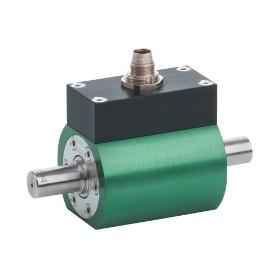
BURSTER PRÄZISIONSMESSTECHNIK GMBH & CO KG
Germany
This high precision torque sensor is designed for both static and dynamic measurements on non-rotating applications. It is particularly suitable for torque measurements on, for instance, extremely small electrical actuating drives and micro-mechanical actuator elements, or for measuring reaction torques e.g. on micro-motors. The high accuracy of measurement also makes this sensor ideal for use as a reference in many fields of industrial manufacture as well as laboratory research and development projects. Not containing any rotating parts, it requires no maintenance if properly used. The strain-gage based sensor’s modular design allows precise configuration for the desired application. With the integrated amplifier option, the sensor directly supplies a voltage signal of 0 ... ±10 V that is proportional to the torque. The sensor can be configured via the micro-USB interface, providing access to, for example, a filter frequency setting, averaging, and a tare function.
Request for a quote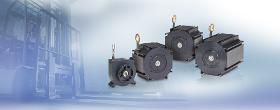
MICRO-EPSILON
Germany
The wireSENSOR mechanics from Micro-Epsilon are designed for mounting of incremental and absolute encoders. They enable you to individually determine the interface, the resolution and the type of connection which can be adapted for further signal processing. High quality precision components and their robust design ensure high operational safety and a long service life even under harsh industrial conditions of use. For series applications involving a large number of pieces, we develop and manufacture tailor-made OEM designs.
Request for a quote
MICRO-EPSILON
Germany
Rotation speed sensors are used to monitor, regulate and control mechanical drive systems and play a major role when it comes to protecting elements of a rotational system (e.g., in the engine, drive) from mechanical overload. Micro-Epsilon offers two sensor systems for rotation speed measurement. The capaNCDT CST6110 is a universal rotation speed sensor for counting tasks and rotation speed applications of any type. Moreover, the turboSPEED DZ140 measuring system is specifically designed for the detection of turbocharger rotation speeds.
Request for a quote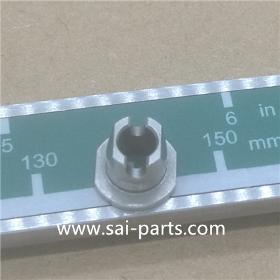
SOOCHOW ADVANCE INDUSTRIES CO., LTD.
China
micro machine parts manufactured by sliding head multi axis CNC lathe Soochow Advance Industries Co., Ltd., (website: www.sai-parts.com) supplies custom OEM mechanical parts, industrial fasteners, screws, bolts, nuts, industrial fittings, electronic hardware by precision CNC machining, CNC turning, CNC milling, CNC engineering.
Request for a quote
TWK-ELEKTRONIK GMBH
Germany
Registration of inclination in the gravitational field by means of MEMS sensors (Micro-Electro-Mechanical-System) with subsequent digitisation and linearisation via controllers. The housing-based inclinometer (model NBN 65) has a stable aluminium housing (optionally stainless steel) and is highly-resistant to vibration and shock. One or two connectors/socket in the case of CANopen can optionally be selected for connection. Casting measures in the housing lead to the achievement of protection class IP 69K, e.g. for use under water.
Request for a quoteDo you sell or make similar products?
Sign up to europages and have your products listed
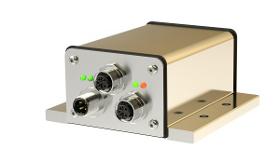
TWK-ELEKTRONIK GMBH
Germany
The sensor system is intended as a component for use e.g. in wind power plants to measure and evaluate vibrations in the mast head. Registration of dynamic accelerations by means of MEMS sensors (Micro-Electro-Mechanical System) with subsequent digitisation by a controller.The device consists of an acceleration sensor, a controller unit and the output interface PROFIsafe over PROFINET for output of the acceleration values. Thanks to its high resistance to vibration and shock - more than the defined measuring range -, the sensor is suitable for use in areas with rough environmental conditions.Electrical connection is carried out using three connectors.
Request for a quote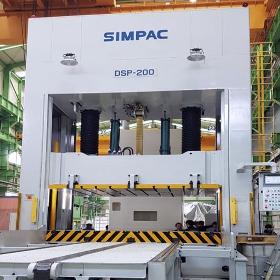
SIMPAC EUROPE GMBH
Germany
The PTS2 series is designed for prototype production, die set-up and modification work (including drawing, bending and punching tasks). The DSP series is especially suitable for die spotting. The mechanical micro inching system provides an accuracy of 0,05 mm. Overview: ● Press capacity: 300-20,000 kN ● Application: die testing tryout and production start-up
Request for a quote
TWK-ELEKTRONIK GMBH
Germany
The inclinometer measures the inclination in the gravitational field by means of MEMS sensors (Micro-Electro-Mechanical-System) with subsequent digitisation and linearisation via controllers. It has a stable aluminium housing (optionally stainless steel) and is highly-resistant to vibration and shock. Casting measures in the housing lead to the achievement of protection class IP 69K. The NBT has a redundant MEMS sensor system, which is used to make a plausibility check inside the inclinometer. Only one position datum is output; the plausibility of this is checked using the second system's position datum. Is the deviation of the two systems higher than a certain value, the sensor will enter the failsafe state.
Request for a quote
TWK-ELEKTRONIK GMBH
Germany
Registration of inclination in the gravitation field using MEMS sensors (Micro-Electro-Mechanical-System) with subsequent digitisation and linearisation via a controller. Data output is carried out via the CANopen interface or as an analogue signal. The inclination sensor has a stable aluminium housing (optionally stainless steel). Slots are available for mechanical alignment (up to approx. ± 7.5°). In the case of CANopen, one connector or one male/female connector combination can be selected optionally for connection purposes. Casting measures in the housing lead to the achievement of protection class IP 69K, e.g. for use under water.
Request for a quote
TWK-ELEKTRONIK GMBH
Germany
The sensor system is intended as a component for use e.g. in wind power plants to measure and evaluate vibrations in the mast head. Registration of dynamic accelerations by means of MEMS sensors (Micro-Electro-Mechanical System) with subsequent digitisation by a controller. The device consists of an acceleration sensors, a controller unit and three types of output interface. Data output is carried out via two analogue interfaces with 4 ... 20 mA plus CANopen and via 4 relay contacts (currently 1 error relay contact). The NVA is parameterised via the CANopen interface. This is not galvanically separated. The sensor is equipped with a filter circuit to protect against fast transients and surge voltages of up to 2 kV in the supply. The protection types are IP 69K (housing) and IP 67 (connector/socket). With its good vibration and shock values, the sensor is suitable for use in areas with rough environmental conditions.
Request for a quote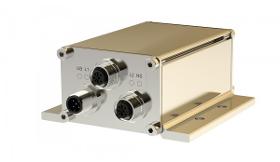
TWK-ELEKTRONIK GMBH
Germany
Registration of inclination in the gravitational field by means of MEMS sensors (Micro-Electro-Mechanical-System) with subsequent digitisation and linearisation via controllers. MEMS sensors are integrated circuits manufactured using silicon bulk micromechanical technology. Double capacities are formed with the aid of moveable micromechanical structures. If these structures are deflected in the case of acceleration, e.g. gravitational acceleration (g), this results in capacity changes, which are registered and further processed using measuring technology. The output voltage follows the function U ~ g * sin α. In this case, the angle α is the sensor's inclination angle measured against the g-vector. These sensors measure precisely, have a long service life and are very robust. The measuring axes operate independently of each other.
Request for a quote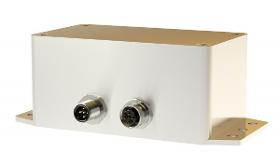
TWK-ELEKTRONIK GMBH
Germany
The sensor system is intended as a component for use e.g. in wind power plants to measure and evaluate vibrations in the mast head. Registration of dynamic accelerations by means of MEMS sensors (Micro-Electro-Mechanical System) with subsequent digitisation by a controller. The device consists of an acceleration sensor, a controller unit and three types of output interface. The main feature is two safety switching contacts (potential-free), which can be used e.g. in the safety chain to undertake safety shut-off in the event of excessively high acceleration values. Data output is carried out via the CANopen interface. The standard or the safety profile can be selected. There are additionally two analogue outputs 4 ... 20 mA, which can be optionally assigned to two of the three measurement axes. Thanks to its high resistance to vibration and shock, the sensor is suitable for use in areas with rough environmental conditions.
Request for a quote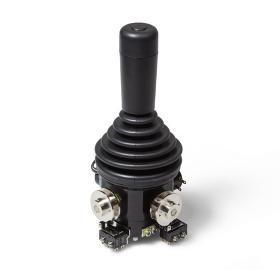
MEGATRON ELEKTRONIK GMBH & CO. KG
Germany
The adaptability of the sensors in the premium joystick series 826 is unequalled in the field of joysticks The joystick series 826 fulfils the highest demands on quality. It shows its strengths at challenging applications with up to 2 axes, where no compromises are made when it comes to endurance and reliability, and the application asks for special sensor configurations. Die configuration options of the series 826 are unique: both axes exhibit a separated shaft for the sensors, so that the sensors, micro switches and return mechanism (spring return/friction clutch) can be adjusted individually. Especially for safety critical applications, this series is often the only series that offers the necessary options to fulfil the requirements.
Request for a quoteResults for
Micro mechanics - Import exportNumber of results
14 ProductsCountries
Company type